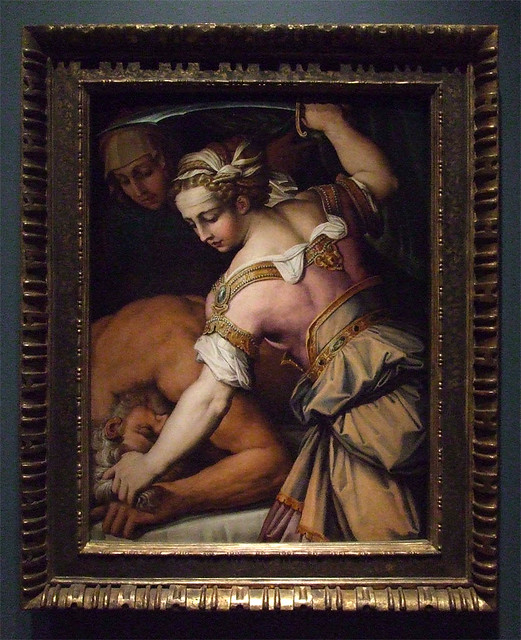Antiochus allied with lapsed Jews against the faithful and outlawed Jewish ritual practice, to the point of prohibiting circumcision and having the death penalty for possessing copies of Scripture. His armies sacked Jerusalem, slaughtered tens of thousands, and desecrated the Temple by offering a pig on the altar and setting up a statue of Zeus. Eventually the guerrilla army of the Maccabee brothers succeeded at driving Antiochus' forces from the Temple.
Re-consecrating the Temple included the replacement of the desecrated altar and altar vessels. The Temple also had a sanctuary lamp — the menorah, a seven-branched candelabra — which required specially consecrated holy oil; however, there was only enough oil to burn for one day, and it would take at least a week to consecrate more. This led to the Miracle of the Oil Container, where this limited amount of oil burned for eight days. Because of this miracle, Hanukkah is also known as the Festival of Lights. Desecration drove the presence of God from the Temple; re-consecration made the Temple once again a fitting resting-place for the Lord, and His return was given a sign by way of a miracle.
These events are found in Josephus, sacred tradition, the two books of Maccabees as found in Catholic Bibles (the Orthodox have four books of the Maccabees!), and from other sources.
Christ celebrated Hanukkah, as seen in John 10:22. He was at the Temple on that feast when He first fully revealed His divinity. This event gives a new spiritual meaning to Hanukkah — the world has been desecrated by Original Sin, and God returns and the world is re-consecrated anew.

Judith Slaying Holofernes, at the Saint Louis Art Museum.
Also observed in Hanukkah is the story of Judith, aunt of Judah Maccabee, who is depicted in the painting above slaying the Assyrian general Holofernes. Smitten by her beauty, Holofernes invited Judith to his tent, where she plied him with salty cheese, making him thirsty — and so he drank plenty of wine to wash it down. After he fell asleep in a drunken stupor, Judith severed his head, which so demoralized his troops that they were defeated in battle. The Book of Judith is found in Catholic and Orthodox bibles.
Fr. Z. has additional information here.


This painting is not by Artemisia Gentileschi, this painting is by Giorgio Vasari, and is dated 1554, almost 40 years before Artemisia was born.
ReplyDeleteHere is a link to one of Artemisia's great Judith paintings - there are 4 of them, telling different aspects of the story.
http://www.culturaitalia.beniculturali.it/pico/modules/event/en/event_2260.html?T=1278904636651
Please correct your post
Usually I take a photo of the the informational sign next to each painting... but not this time.
ReplyDeleteNow why did I think it was by Artemisia?
A number of years ago, I remember seeing this painting as part of a special exhibit on the works of Orazio and Artemisia Gentileschi at the Saint Louis Art Museum. I specifically recall text in that exhibit that speculated that this painting was actually by Artemisia. The curator wrote that a woman painter must have done this. And so I never thought anything else!